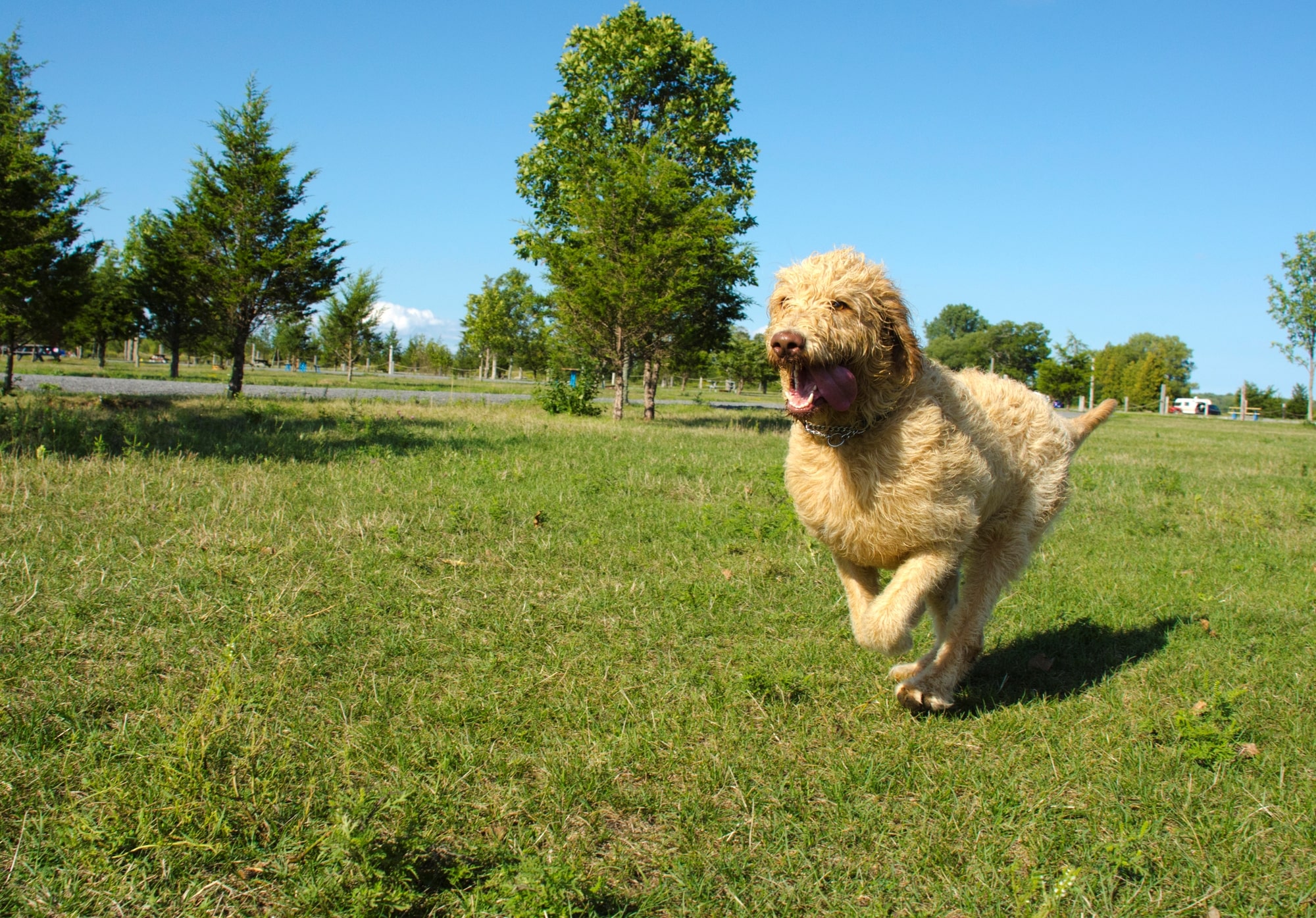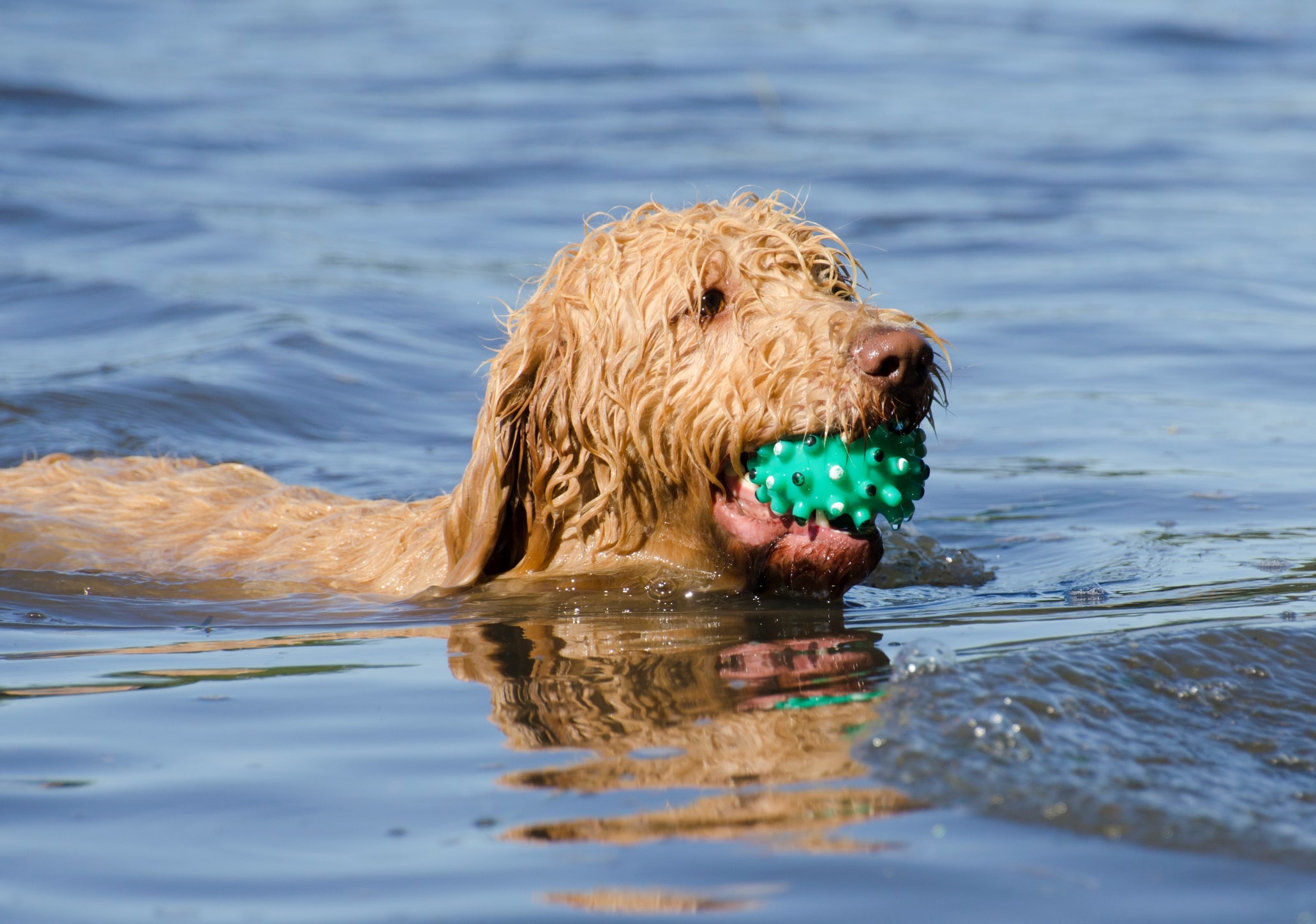Are you interested in learning how to activate your labradoodle’s athletic potential? Agility is the perfect sporting option and offers many advantages for this boisterous breed. Labradoodles have good motor skills and are strong and agile dogs with extremely high intelligence. Are labradoodles good at agility competitions, and how can you help your pup develop its skills? Read on to learn more.

What Is Agility Training for Dogs?
Agility is an intense sport where dogs’ training and handling are tested. The sport of dog agility originated by combining horse sprinting with many challenges specific to animals. The contest involves the competitors vying against each other to instruct their canine friends in different challenging activities.
In this sport, winning dogs are the fastest to complete a course. Agility is defined as activities like tunnel run jumps and pole weaving, as well as seesaws, tunnels and pause tables.
Are Labradoodles Good At Agility?
Being a cross between a poodle and another breed ranging in size from the border collie to the golden and Labrador retriever, a doodle can be an exceptionally athletic and good agility dog. Both parents are known for being fast runners and extremely smart dogs overall, so doodles have superior athletic abilities thanks to their parents.
Doodles, including goldendoodles, labradoodles and cockapoos, have instinctual urges to participate in activities such as:
- Hunting for food
- Solving problems
- Navigating and leading through terrain
- Evaluating situations for safety, danger and social opportunities
- Engaging with other animals in play and group activities
Positive reinforcement during agility training, such as offering high-value dog food and treats for your dog to search for, and other techniques can help you transform an easily trainable pup into a gregarious and helpful friend for life.
Training Labradoodles for Agility
The simple act of playing with your Labrador retriever mix or another breed in a structured manner using obstacles and other challenges can be a very enjoyable exercise for the whole family, such as playing by putting a treat in a hiding spot.
By incorporating obstacles for your dog to jump over and weave around, you’re engaging not only their athletic prowess but also their natural intelligence and need to work. Dogs can even help in real-world jobs when they have agility training, such as by referring traffic to a safe path or working as a rescue dog.
A Word About Intelligence in Labradoodles
Labradoodles are arguably a highly intelligent breed. This is caused by their parents’ genes, as labradoodles are bred from both poodles and other canines with high athletic and intellectual abilities.
Doodles are clever and intelligent. They can understand a wide array of commands and do a variety of complex tasks easily — as well as the canines they’ve been bred from. It’s important to maintain a high level of athletic and intellectually stimulating activities in their daily lives to help prevent boredom and the destructive behaviors that can lead to.
A Guide to Mental Stimulation Exercises for Your Labradoodle
Mental stimulation and activity are as important for labradoodles as for other dogs. Utilize tools such as mentally stimulating toys that hide treats behind complex puzzles and have great fun with all the exercising needed to keep these friendly canines calm.
Rain or shine, labradoodles need to stimulate their minds with exercise and fun. There are many simple, short games for your pup to learn. Indoor dog agility training is easy to accomplish without purchasing an expensive obstacle course and different obstacles. Highly energetic labradoodles can engage with any activities you set up for them.
It’s fun to spend time with these active dogs using techniques such as creating tunnels for them to run through from couch cushions, pillows, boxes or kitchen chairs.
Stimulating Outdoor Games: Build an Agility Course in Your Backyard
When it’s sunny out, playing outside is a great way to run off your pup’s excess energy and train it in your own backyard. You can build your own obstacle course, complete with weave poles and a pause table to practice perfect poses on, or just work with the toys you already have.
Labrador retrievers, golden retrievers and poodles are natural agility dogs. Their innate athletic abilities and energy make them eager to run, perform trick jumps and learn new skills and agility exercises. A simple backyard agility course can include the use of your labradoodle’s favorite ball, with you helping it learn by guiding it through the yard with its nose, leading up to it pushing the ball through your homemade obstacle course.
On especially hot days, you can throw pieces of a carrot in a shallow pool and let it play a doggy version of bobbing for apples, a fun way to teach aim and coordination. Or, just enjoy having it perform jump tricks to catch water from a hose.
Agility Competitions Make Great Outlets for Agility Dogs
Excellent agility dogs and dog owners can show off their skills at an agility competition. These types of dog shows bring together different dog breeds to compete in activities such as racing through agility courses. The American Kennel Club has thousands of events each year for different aspects of dog training. Highly intelligent dogs are found in several dog breeds, and an agility club can be a great opportunity for you to make friends with both pups and owners as well as observe the ways a good agility partner can enhance your dog’s ability to learn.

Benefits of Dog Agility Training at Pride and Prejudoodles
A good puppy class that teaches self-control and encourages natural athletic instincts can help ensure you have a healthy and socially adept labradoodle as it grows. In addition to training your dog in agility and obedience, an agility training program provides dog lovers with access to professionals who can provide:
- Referrals for veterinary guidance regarding genetic issues such as joint issues
- Information on how to be a better handler
- Education about the body language of your pet
- Coaching on entering your labradoodle into competition when it’s ready
Visit Pride and Prejudoodles to enroll your labradoodle in a training course. We offer both one-month and three-month training programs that include socialization, obedience, house training and self-control. We also have our own sweet, socialized and agile labradoodle and cockapoo (with a cocker spaniel parent) puppies up for adoption if you’re interested in a purebred labradoodle that’s already been trained.
